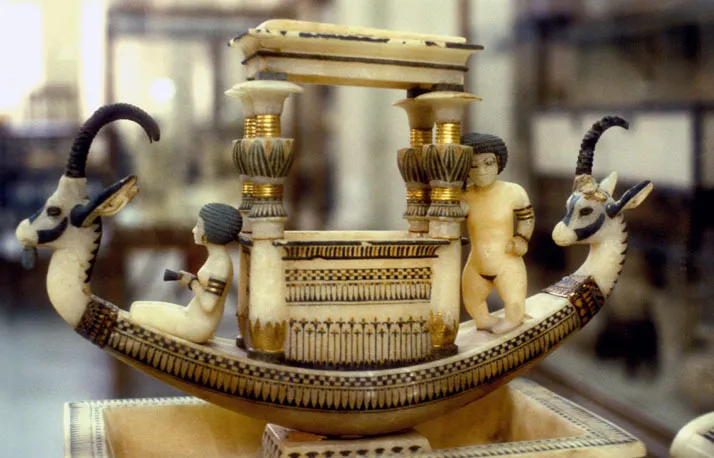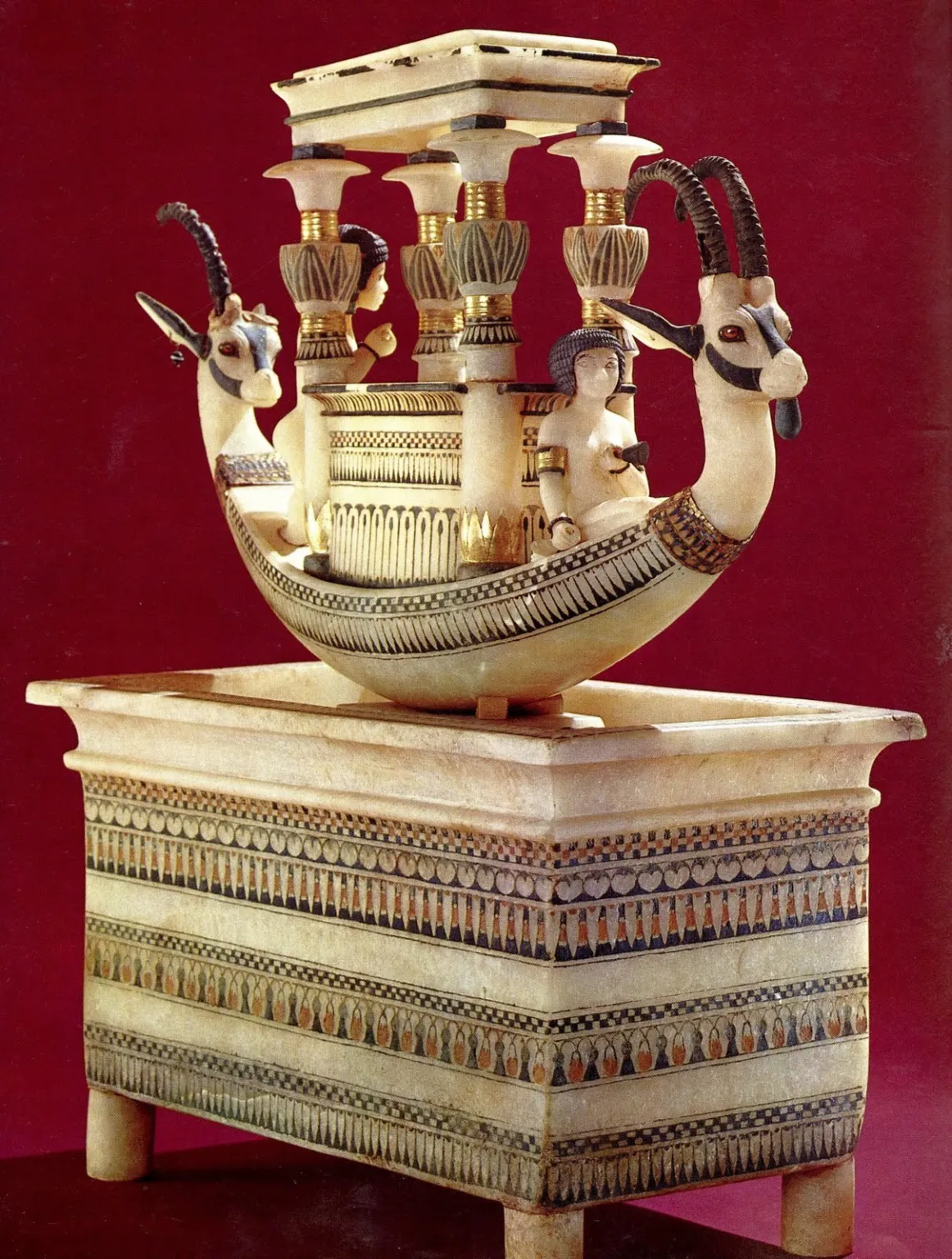Traveling through time: Tutankhamun’s alabaster ship

Amidst the treasures unearthed from the illustrious tomb of King Tutankhamun, one artifact stands out for its exquisite beauty and enigmatic purpose—the Alabaster Boat. Resting atop a base resembling a square pool, this remarkable piece captivates with its elegance and mystique, offering a window into the ceremonial splendor of ancient Egypt.

A Masterpiece Of Craftsmanship
Crafted from luminous alabaster, the boat is a testament to the skill and artistry of ancient Egyptian artisans. Its smooth contours and graceful lines evoke the timeless beauty of the Nile, while its intricate details speak to the meticulous care with which it was crafted. From prow to stern, every aspect of the boat reflects the reverence and devotion with which it was fashioned—a tribute to the pharaoh and the gods he served.

A Symbol Of Celebration
While the precise function of the Alabaster Boat remains shrouded in mystery, scholars speculate that it may have served as a centerpiece for ceremonial celebrations and religious rituals.
 Its placement in the annex of King Tutankhamun’s tomb suggests a special significance, perhaps as a vessel for holding offerings or as a symbol of the king’s journey into the afterlife. Indeed, when Howard Carter discovered the boat, it was adorned with garlands of flowers, hinting at its role in festive occasions and joyous ceremonies.
Its placement in the annex of King Tutankhamun’s tomb suggests a special significance, perhaps as a vessel for holding offerings or as a symbol of the king’s journey into the afterlife. Indeed, when Howard Carter discovered the boat, it was adorned with garlands of flowers, hinting at its role in festive occasions and joyous ceremonies.

Unveiling Ancient Rites
The Alabaster Boat offers a tantalizing glimpse into the spiritual and cultural practices of ancient Egypt. As it glided through the waters of the Nile, it carried with it the hopes and prayers of a civilization deeply connected to the rhythms of nature and the cycles of life and death. Whether used for religious processions, funerary rites, or royal festivities, the boat symbolized the eternal journey of the soul and the promise of rebirth and renewal.